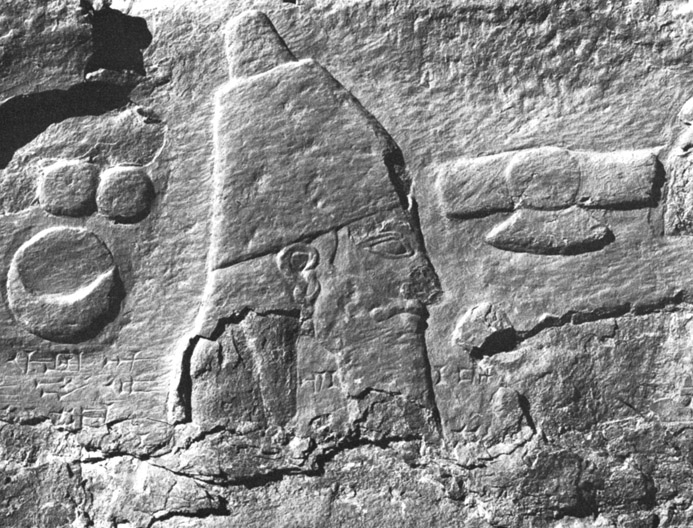Shikaft-e Gulgul on:
[Wikipedia]
[Google]
[Amazon]
Shikaft-e Golgol-Gulgul (or Gulgulcave or Golgolcave) site is an 
Assyria
Assyria ( Neo-Assyrian cuneiform: , romanized: ''māt Aššur''; syc, ܐܬܘܪ, ʾāthor) was a major ancient Mesopotamian civilization which existed as a city-state at times controlling regional territories in the indigenous lands of the ...
n rock relief
A rock relief or rock-cut relief is a relief sculpture carved on solid or "living rock" such as a cliff, rather than a detached piece of stone. They are a category of rock art, and sometimes found as part of, or in conjunction with, ...
and inscription located in the vicinity of Gulgul, گل گل a village near Mount Pushta-e Kuh at Ilam in Iran
Iran, officially the Islamic Republic of Iran, and also called Persia, is a country located in Western Asia. It is bordered by Iraq and Turkey to the west, by Azerbaijan and Armenia to the northwest, by the Caspian Sea and Turkmeni ...
. It was discovered by Louis Vanden Berghe (Ghent University, Royal Museums of Art and History, Brussels). The rock-carved relief is attributed to Esarhaddon
Esarhaddon, also spelled Essarhaddon, Assarhaddon and Ashurhaddon ( Neo-Assyrian cuneiform: , also , meaning " Ashur has given me a brother"; Biblical Hebrew: ''ʾĒsar-Ḥaddōn'') was the king of the Neo-Assyrian Empire from the death of hi ...
. The sovereign depicted is wearing an Assyrian tiara
A tiara (from la, tiara, from grc, τιάρα) is a jeweled head ornament. Its origins date back to ancient Greece and Rome. In the late 18th century, the tiara came into fashion in Europe as a prestigious piece of jewelry to be worn by women ...
, dressed in a tunic with only the feet appearing, and wearing earrings. He is armed with a sword, worn on a belt, and holding a mace in his left hand. The right arm is broken and seems to hold an object. On both sides of the king, divine symbols are represented. They include to the left; a full moon, the seven planets and the sun-disk symbol Ishtar
Inanna, also sux, 𒀭𒊩𒌆𒀭𒈾, nin-an-na, label=none is an ancient Mesopotamian goddess of love, war, and fertility. She is also associated with beauty, sex, divine justice, and political power. She was originally worshiped in Su ...
. At right a winged disk and a horned tiara are identified as symbols of Shamash and Assyria
Assyria ( Neo-Assyrian cuneiform: , romanized: ''māt Aššur''; syc, ܐܬܘܪ, ʾāthor) was a major ancient Mesopotamian civilization which existed as a city-state at times controlling regional territories in the indigenous lands of the ...
. An inscription is also visible.
It is oblong shaped with 130X90 centimeters dimensions. Its height from the ground stands at 270 centimeters. On the inscription there is an engraving of an Assyrian soldier with a helmet, holding an arrow, with a moon and a star above his head and on the lower section of this inscription, several sentences in cuneiform language have been engraved which were translated by Mr. Vandenberg in 1973 AD. These sentences refer to the conquest of Elam and Lorestan by the Assyrians.

See also
* Bit-Istar * Tang-i VarReferences